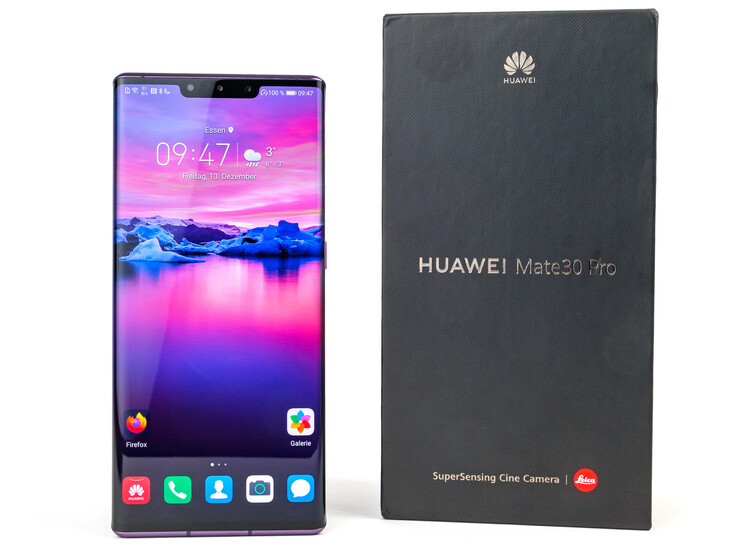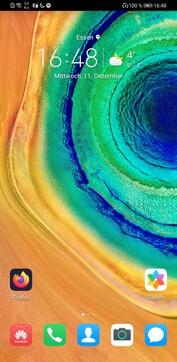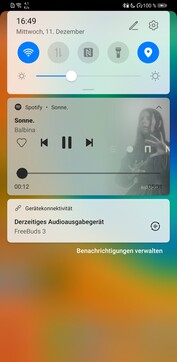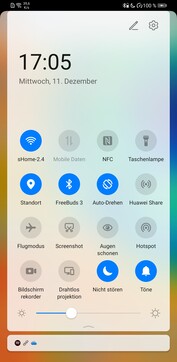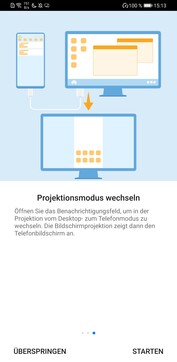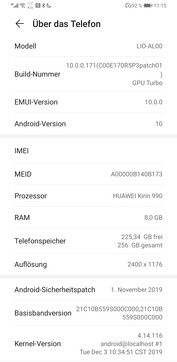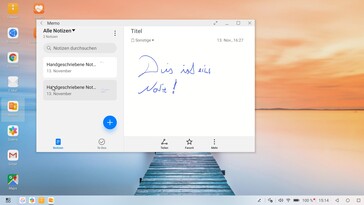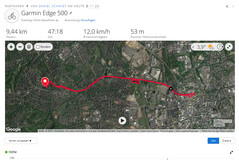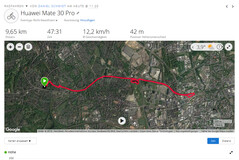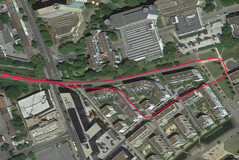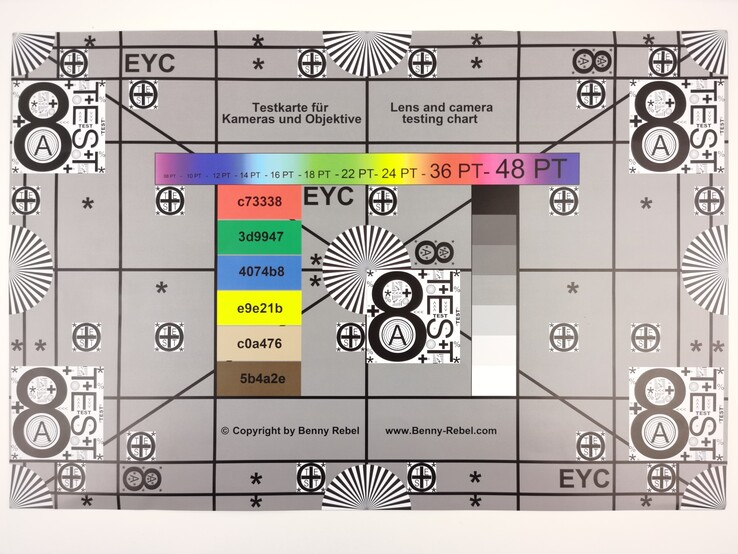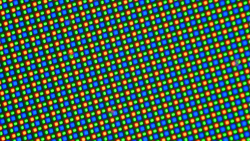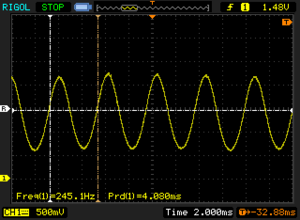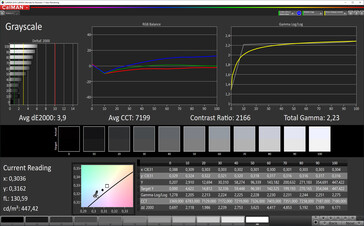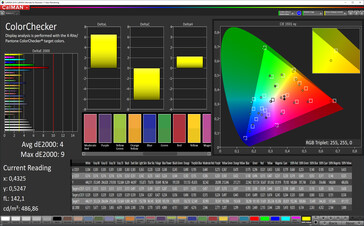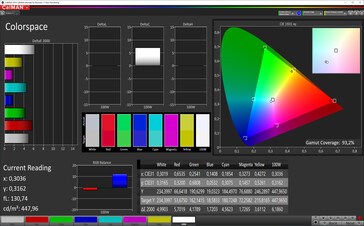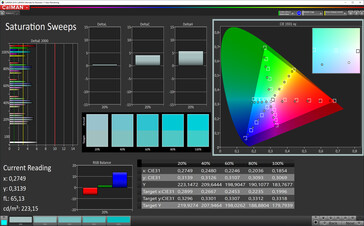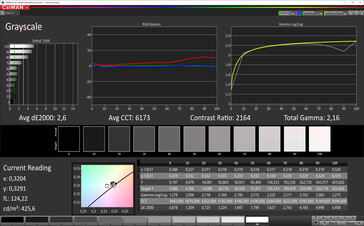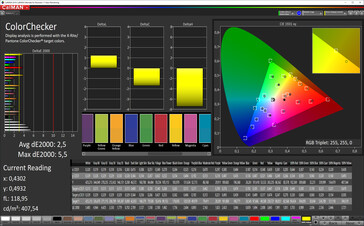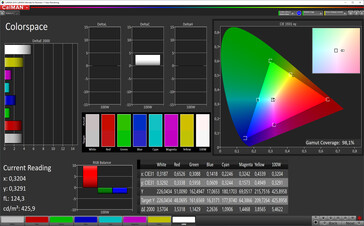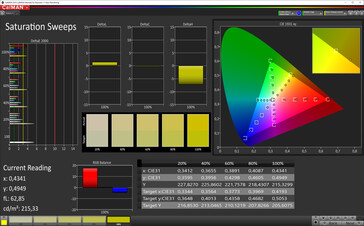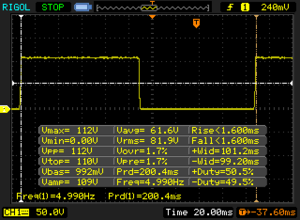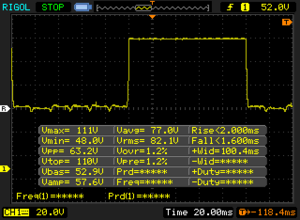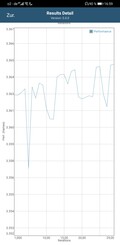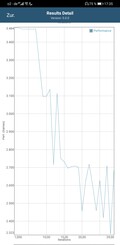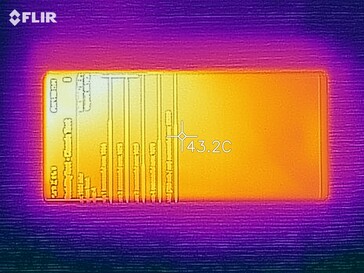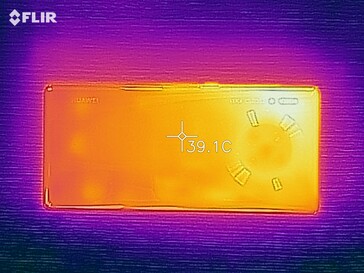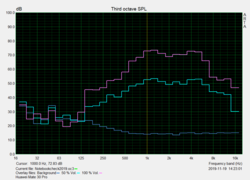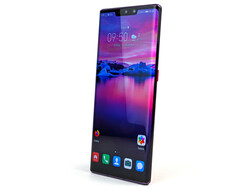Huawei Mate 30 Pro Smartphone Review: A strong smartphone even without Google
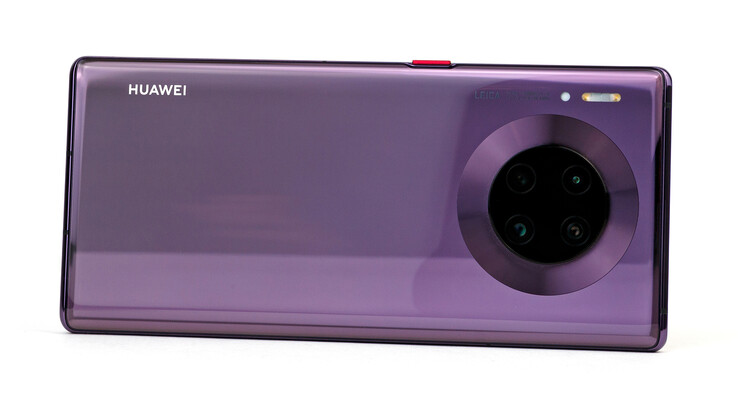
The Huawei Mate series is characterized by always combining the most recent technology and the latest innovations. The Mate 30 Pro is the first device to feature the Kirin 990 SoC, for example. Additionally, Huawei, like LG and Google, dares to attempt to integrate gesture controls into its smartphone.
The Mate 30 Pro is available in different configurations. If you do not yet need a 5G model, then you can choose a variant with the Kirin 990, which we are testing here. This always has 8 GB of RAM and either 128 GB or 256 GB of internal UFS 3.0 storage. The 5G version is equipped with the Kirin 990 5G, and has the same amount of RAM, but it offers 256 GB or 512 GB of storage. All models offer a 6.53-inch ultra-curved OLED display and a 4,500 mAh battery.
Unlike in previous years, there is not a slightly modified P series camera in the Mate, as this year Huawei is focusing on videography and includes its own sensor with many functions. But photography is also not neglected, although comparing it against the P30 Pro shows reduced zoom properties.
Device Comparison
Rating | Date | Model | Weight | Drive | Size | Resolution | Price |
|---|---|---|---|---|---|---|---|
| 89 % v7 (old) | 12 / 2019 | Huawei Mate 30 Pro Kirin 990, Mali-G76 MP16 | 198 g | 256 GB UFS 3.0 Flash | 6.53" | 2400x1176 | |
| 86.9 % v7 (old) | 02 / 2019 | Huawei Mate 20 Pro Kirin 980, Mali-G76 MP10 | 189 g | 128 GB UFS 2.1 Flash | 6.30" | 3120x1440 | |
| 87.1 % v7 (old) | 09 / 2019 | Apple iPhone 11 Pro Max A13 Bionic, A13 Bionic GPU | 226 g | 64 GB SSD | 6.50" | 2688x1242 | |
| 87.5 % v7 (old) | 08 / 2019 | Samsung Galaxy Note10+ Exynos 9825, Mali-G76 MP12 | 196 g | 256 GB UFS 3.0 Flash | 6.80" | 3040x1440 | |
| 84.6 % v7 (old) | 11 / 2019 | LG G8X ThinQ SD 855, Adreno 640 | 192 g | 128 GB UFS 2.1 Flash | 6.40" | 2340x1080 | |
| 86.9 % v7 (old) | 11 / 2019 | OnePlus 7T Pro SD 855+, Adreno 640 | 206 g | 256 GB UFS 3.0 Flash | 6.67" | 3120x1440 |
Case - glass as far as the eye can see
The Huawei Mate 30 Pro consists of plenty of glass on the front and back. However, the head and chin are made of metal, as is the frame on the long edges of the device, which has been made very thin and is only interrupted by a red-accented power button. Space Silver, Emerald Green and Cosmic Purple are available as colour variants, as well as Forest Green and Orange, which are covered with synthetic leather on the back. However, the availability of individual models is region limited.
Huawei specifies a thickness of 8.8 millimetres; we measure 8.95 millimetres. The cameras protrude an additional 1.25 millimetres from the case. The smartphone feels good in the hand, and the build quality is excellent. The back of our purple unit picks up fingerprints easily. The gaps are very close-fitting and a perfect fit, with attempts at twisting the Mate 30 Pro not affecting it.
The card slot has the same colouring as the frame and sits slightly recessed within the case. The cardholder is made of plastic and can hold either two nano-SIM cards or, instead of a second SIM, a nano memory card.
The battery is permanently installed and cannot be changed by the user. The Huawei phone is IP68 compliant against the ingress of dust and water.
Connectivity - Only gentle adjustments in the Mate 30 Pro
Huawei does not skimp on the USB connection and provides a 3.1 interface (Gen. 1), which in addition to OTG and Power Delivery also provides image and audio output.
Memory expansion using the nano memory card continues to be a special path of Huawei's, which we still cannot understand a year after its introduction. Also, the availability of other card sizes has not changed since then, either.
Wired quick charge remains, as in the previous year, at 40 W. An arms race with OnePlus and Xiaomi is something in which the top of the class from China does not seem to want to get involved. If you prefer to charge your smartphone wirelessly, you can now use up to 27-W charging pads. Reverse wireless charging has also been improved and should now be three times faster than its predecessor.
There is also an infrared transmitter in the smartphone that can control some consumer entertainment electronics and co. A notification LED is no longer present in the Mate 30 Pro; in this regard Huawei is probably now fully relying on the device's always-on display instead.
Software - EMUI 10.0 without Google services
Huawei continues to use Android in the current version 10 with the EMUI 10.0, but because of the embargo the Mate 30 Pro comes delivered without Google services or a preinstalled Play Store.
The Huawei AppGallery can certainly partially compensate for this, but there are no conventional messengers or social media apps. There are ways to sideload the Play Store retroactively, but that does not mean that all Google features like Google Pay will work. Our loaner provider TradingShenzhen preinstalls the Play Store directly on the smartphone and also offers installation instructions on how to do so, but it cannot guarantee that this is a permanent solution.
The Huawei Mate 30 Pro again offers a desktop mode, and the user account control is also active in our model. Since our test device is a Chinese model (LIO-AL00), there is no DRM certification, so protected content cannot be streamed in HD. Models sold in Germany (LIO-L29C), for example, should have this and should not be restricted in this regard.
Communication & GNSS - No Wi-Fi 6, but Bluetooth 5.1
Mobile connectivity arrives on the Huawei Mate 30 Pro at best with LTE; a 5G version is also available, though. The frequency connectivity is very good across all mobile radio standards; unfortunately, there is so far no reliable information about how fast the smartphone can operate on 4G.
In terms of Wi-Fi, it masters the IEEE 802.11 standards a, b, g, n and ac, and thus is Wi-Fi 5 at best. By using MIMO antenna technology with VHT160, theoretical data speeds up to 1.7 Gb/s are possible, which are still higher than those of the competition with Wi-Fi 6. Since our reference router Linksys EA8500 does not master either one, the transmission speeds in our tests are much lower. The new router is already ready though, and we will submit these measurements subsequently.
The communication equipment is rounded off with NFC and Bluetooth 5.1.
Update 01/16/2020: We are using a new reference router from Netgear (Nighthawk AX12), which supports Wi-Fi 6 as well as VHT160 to utilize the full performance of the Mate 30 Pro. This results in much higher transfer rates for the Huawei smartphone. The Mate 30 Pro also has a more stable connection in this new environment compared to the Mate 20 Pro or P30 Pro, which support the same technology according to the specs, but only reach much lower rates when sending data.
Location services are provided by the satellite networks BeiDou, GPS, Glonass and Galileo, whereby the American and European GNSS also offers dual-band support. The satfix succeeds with the Mate 30 Pro indoors and outdoors quickly and precisely.
On a small bike tour, the Huawei phone has to compete with the Garmin Edge 500. The difference in the total recorded distance is a quite high 210 metres, though when you look into the course of the route it becomes clear that the Mate has the higher accuracy of the two devices.
Telephone Functions & Call Quality
We really liked the call quality of the Huawei Mate 30 Pro in our tests. The noise suppression reliably filters out ambient sounds, and in loudspeaker mode the Mate also cuts a fine figure, though the microphone characteristics can no longer be altered. In the Chinese version of the smartphone it is possible to tag a conversation. Whether this function is also included in a European version remains questionable.
VoLTE and WLAN calling are supported by the Huawei phone, but a link to SIM accounts is not, though. If you also use a second SIM card, you have to do without one LTE band (32) and two 3G bands (34 and 39).
Cameras - Four optics and a video sensor in the Mate 30 Pro
On the front in the notch one finds a 32 MP camera. Contrary to what might be expected, Huawei does not use pixel binning here. In daylight, the camera takes good selfies, and the exposure in portrait mode works really well even on the hair. As soon as less light is available, the quality of recordings decreases significantly, though. Videos are only recorded in Full HD, and more importantly, there is no autofocus.
The showpiece is the quad-camera on the rear. In addition to the 40 MP main sensor, which in a similar form we already know from the P30 Pro, a second 40 MP sensor has been added, which was specially integrated for video recordings and doubles as the ultra-wide-angle camera. The sensor is even larger, although it does not use the RYYB colour scheme and instead relies upon the classic RGGB. Likewise, Huawei has opted for a different aspect ratio in 3:2, which is better suited for video recordings. Furthermore, there are 3x optical zoom and ToF cameras. Huawei allows you to place a trigger to activate the shutter button on the curved part of the display.
Photos are really good with the Mate 30 Pro, though they look a bit too dark and their colour accuracy needs optimising when comparing them with the competition. The Huawei phone remains unchallenged in the dark, in which it teases out the most light and the most diverse details. Most notably, the additional 40 MP sensor makes it possible to capture bright ultra-wide angle shots.
Ultra-wide-angle comparison (from left): Mate 30 Pro, P30 Pro, Galaxy S10 +, iPhone 11 Pro, Xiaomi Mi 9
The Huawei Mate 30 Pro is the first smartphone of the Chinese company that finally supports Ultra HD video at up to 60 FPS. Coupled with the large sensor, the Mate 30 Pro can take good shots even in low light. Unfortunately, very dark lighting situations show that the camera struggles with image noise and artefacts. In such moments, it would certainly be nicer if the picture were a little darker, as this would improve the image quality, in our opinion. It is positive to note that, at any time, the Mate 30 Pro can be zoomed in or out between the ultra-wide-angle sensor through to 10x magnification.
We also subjected the Huawei Mate 30 Pro to further tests in controlled lighting conditions. The main camera showed that it can reproduce details to a very high level here, but contrast levels visibly reduce contrast towards the edges of our test pictures.
In terms of colour accuracy, the main camera reproduced colours too brightly in our test environment. Paradoxically, they are comparatively close to their natural appearance in the dark and have lower DeltaE deviations.
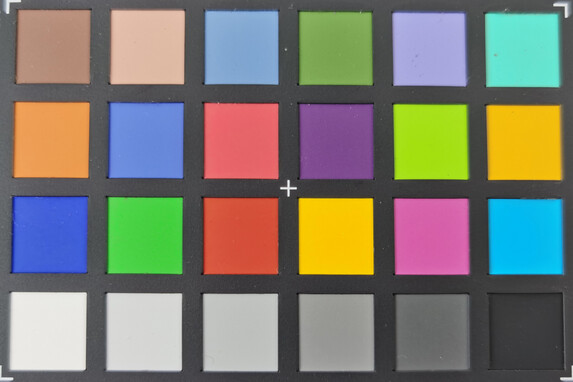
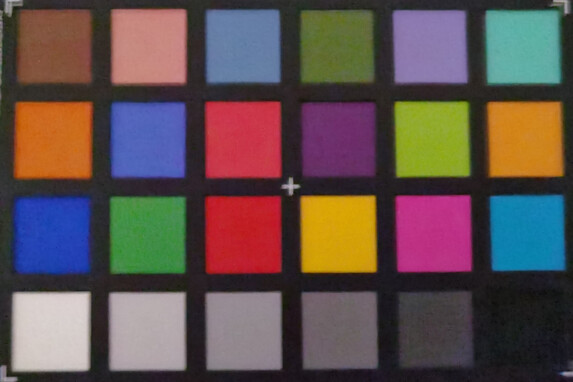
Accessories & Warranty
The Huawei Mate 30 Pro comes with a modular 40 W power supply, a USB cable (Type-A to Type-C), a set of headphones, some documentation, a SIM tool and a transparent silicone cover. The latter is only included in the Chinese version, though.
The warranty runs for 24 months and cannot be extended. Please see our Guarantees, Return Policies & Warranties FAQ for country-specific information.
Input Devices & Operation - M-Pen and gesture support
The capacitive touchscreen of the Mate 30 Pro recognizes up to 10 touches simultaneously, has great sliding properties and it reacts in all scenarios quickly and reliably. Additionally, it now supports the M-Pen, which elsewhere already appeared in the Mate 20 X. However, this must be purchased optionally, like with the Mate 20 X.
The pen itself sits comfortably in hand, but writing or drawing on the Mate 30 Pro does not feel very natural but rather very hard. The S-Pen works considerably better in partnership with the Note 10+ than the Mate 30 Pro and M Pen, in our opinion. In addition, we repeatedly provoked the display with our hands while writing.
A new appearance is that of gesture control. Unfortunately, only two gestures are offered here. One's hand is recognised by the sensor quickly, but browsing through apps is very tough. Additionally, the apps must have been adapted to this, otherwise, the smartphone will think up its own response. Thus, it will open a sub-menu in Firefox, for example, instead of scrolling through a website. Regardless, the screenshot gesture works flawlessly, though.
Our Chinese model had its own keyboard layout from Huawei preinstalled, but this can easily be replaced with any layout from the Play Store, and the AppGallery also offers common alternatives like TouchPal or SwiftKey. The latter will probably be used again in this part of the world.
Another peculiarity is the lack of a volume rocker. This is displayed by double-tapping on the curved edge of the screen, which works perfectly on both the left and right-hand side. Like in its predecessor, the fingerprint sensor sits under the display and works even better. In everyday use, however, we prefer to use the good 3D face recognition technology, instead.
Display - A victim on the altar of curvature
The so-called Horizon display has grown somewhat nominally compared to its predecessor, but this is due to the strongly curved edges (88 degrees). The content displayed across the edges can sometimes be annoying, but this can be hidden using software. More annoying here is that Huawei did not settle for a 1440p display again, but rather reduced the resolution, which results in a significantly lower pixel density than the panel in the Mate 20 Pro has. The sharpness is still high enough, though we would have expected a gain rather than a step back in a high-end smartphone.
The brightness is very high when the sensor is activated, but it cannot compete with the top values of its competitors. Also, the Mate 30 Pro reaches a maximum of 782 cd/m² in the APL50 test, which is not optimal for displaying HDR content.
By contrast, the use of pulse width modulation (PWM) is typical for OLEDs, and it has a frequency response that fluctuates between 235.8 and 245.1 Hz and is therefore comparatively uniform.
| |||||||||||||||||||||||||
Brightness Distribution: 96 %
Center on Battery: 592 cd/m²
Contrast: ∞:1 (Black: 0 cd/m²)
ΔE ColorChecker Calman: 2.5 | ∀{0.5-29.43 Ø4.78}
ΔE Greyscale Calman: 2.6 | ∀{0.09-98 Ø5}
98.1% sRGB (Calman 2D)
Gamma: 2.16
CCT: 6173 K
| Huawei Mate 30 Pro OLED, 2400x1176, 6.5" | Huawei Mate 20 Pro OLED, 3120x1440, 6.3" | Apple iPhone 11 Pro Max OLED, 2688x1242, 6.5" | Samsung Galaxy Note10+ Dynamic AMOLED, 3040x1440, 6.8" | LG G8X ThinQ OLED, 2340x1080, 6.4" | OnePlus 7T Pro AMOLED, 3120x1440, 6.7" | |
|---|---|---|---|---|---|---|
| Screen | 18% | 29% | 7% | -60% | -3% | |
| Brightness middle (cd/m²) | 592 | 576 -3% | 790 33% | 683 15% | 570 -4% | 606 2% |
| Brightness (cd/m²) | 605 | 582 -4% | 790 31% | 694 15% | 581 -4% | 611 1% |
| Brightness Distribution (%) | 96 | 90 -6% | 97 1% | 96 0% | 90 -6% | 95 -1% |
| Black Level * (cd/m²) | ||||||
| Colorchecker dE 2000 * | 2.5 | 1.3 48% | 1.4 44% | 2.9 -16% | 6.27 -151% | 3.46 -38% |
| Colorchecker dE 2000 max. * | 5.5 | 3.5 36% | 3.4 38% | 4.8 13% | 9.75 -77% | 5.64 -3% |
| Greyscale dE 2000 * | 2.6 | 1.6 38% | 1.9 27% | 2.2 15% | 5.7 -119% | 2 23% |
| Gamma | 2.16 102% | 2.18 101% | 2.23 99% | 2.11 104% | 2.37 93% | 2.258 97% |
| CCT | 6173 105% | 6561 99% | 6466 101% | 6247 104% | 7309 89% | 6779 96% |
* ... smaller is better
Screen Flickering / PWM (Pulse-Width Modulation)
| Screen flickering / PWM detected | 245.1 Hz | ≤ 99 % brightness setting | |
The display backlight flickers at 245.1 Hz (worst case, e.g., utilizing PWM) Flickering detected at a brightness setting of 99 % and below. There should be no flickering or PWM above this brightness setting. The frequency of 245.1 Hz is relatively low, so sensitive users will likely notice flickering and experience eyestrain at the stated brightness setting and below. In comparison: 53 % of all tested devices do not use PWM to dim the display. If PWM was detected, an average of 8111 (minimum: 5 - maximum: 343500) Hz was measured. | |||
We checked the colour accuracy of the OLED display in the Mate 30 Pro with the analysis software CalMAN. The larger colour-space coverage is present in the Vivid profile, which is based on DCI-P3, although it reproduces images somewhat too coolly. This works better in the Natural mode, in which the greyscale is even a bit too warm and operates within the smaller sRGB colour space. Using the Vivid profile, one can adjust the colour temperature, though the display performance remains poorer in its warmest position than in Natural mode. In summary, the Huawei phone delivers a good representation here but one that is simultaneously worse than the Mate 20 Pro and some of its competitors.
Display Response Times
| ↔ Response Time Black to White | ||
|---|---|---|
| 3.2 ms ... rise ↗ and fall ↘ combined | ↗ 1.6 ms rise | |
| ↘ 1.6 ms fall | ||
| The screen shows very fast response rates in our tests and should be very well suited for fast-paced gaming. In comparison, all tested devices range from 0.1 (minimum) to 240 (maximum) ms. » 13 % of all devices are better. This means that the measured response time is better than the average of all tested devices (20.2 ms). | ||
| ↔ Response Time 50% Grey to 80% Grey | ||
| 3.6 ms ... rise ↗ and fall ↘ combined | ↗ 2 ms rise | |
| ↘ 1.6 ms fall | ||
| The screen shows very fast response rates in our tests and should be very well suited for fast-paced gaming. In comparison, all tested devices range from 0.165 (minimum) to 636 (maximum) ms. » 13 % of all devices are better. This means that the measured response time is better than the average of all tested devices (31.6 ms). | ||
Outdoors, the Mate 30 Pro performs well too. The reflections from its glossy surface are limited, and due to the high brightness and strong contrast, the smartphone should not have any major problems on bright days.
We also like the viewing-angle stability, which only shows a slight loss of brightness at flat viewing angles. The colour veil typical of OLEDs is also hardly noticeable, and we do not perceive the curved display edges as an impairment to everyday use.
Performance - Kirin 990 in the Huawei Mate
The Kirin 990 is HiSilicon's latest high-end SoC that has a CPU equipped with a total of eight cores. The two strongest A76 cores clock at up to 2.86 GHz, whereas their somewhat weaker siblings can only reach 2.09 GHz. These are joined by four Cortex-A55 power-saving cores, which each output at up to 1.86 GHz. Supporting the SoC is a dual-core NPU and 8 GB of LPDDR4x RAM. Graphics tasks are carried out by an ARM Mali-G76 MP16, in essence, the same GPU as in its predecessor. The only difference between the two is the former is equipped with more computing units than the latter.
In benchmarks with performance mode activated, the Mate 30 Pro delivers very good results and shows a decent performance increase compared to its predecessor. The GPU performs well too and can easily beat its competitors, but its efficiency needs improving. This is particularly noticeable in a direct comparison between the Mate 30 Pro and Note 10+. The latter uses the same GPU with four fewer cores activated but is still hardly any slower than the GPU in the Mate 30 Pro.
| PCMark for Android | |
| Work performance score (sort by value) | |
| Huawei Mate 30 Pro | |
| Huawei Mate 20 Pro | |
| Samsung Galaxy Note10+ | |
| LG G8X ThinQ | |
| OnePlus 7T Pro | |
| Average HiSilicon Kirin 990 (10918 - 13947, n=2) | |
| Work 2.0 performance score (sort by value) | |
| Huawei Mate 30 Pro | |
| Huawei Mate 20 Pro | |
| Samsung Galaxy Note10+ | |
| LG G8X ThinQ | |
| OnePlus 7T Pro | |
| Average HiSilicon Kirin 990 (8636 - 10322, n=2) | |
| Basemark GPU 1.1 | |
| 1920x1080 Vulkan Medium Offscreen (sort by value) | |
| Huawei Mate 30 Pro | |
| Huawei Mate 20 Pro | |
| Samsung Galaxy Note10+ | |
| OnePlus 7T Pro | |
| Average HiSilicon Kirin 990 (n=1) | |
| Vulkan Medium Native (sort by value) | |
| Huawei Mate 30 Pro | |
| Huawei Mate 20 Pro | |
| Samsung Galaxy Note10+ | |
| OnePlus 7T Pro | |
| Average HiSilicon Kirin 990 (n=1) | |
| 1920x1080 OpenGL Medium Offscreen (sort by value) | |
| Huawei Mate 30 Pro | |
| Huawei Mate 20 Pro | |
| Samsung Galaxy Note10+ | |
| OnePlus 7T Pro | |
| Average HiSilicon Kirin 990 (n=1) | |
| AnTuTu v7 - Total Score (sort by value) | |
| Huawei Mate 20 Pro | |
| Apple iPhone 11 Pro Max | |
| Samsung Galaxy Note10+ | |
| AnTuTu v6 - Total Score (sort by value) | |
| Huawei Mate 20 Pro | |
| Samsung Galaxy Note10+ | |
| VRMark - Amber Room (sort by value) | |
| Huawei Mate 30 Pro | |
| Huawei Mate 20 Pro | |
| Samsung Galaxy Note10+ | |
| OnePlus 7T Pro | |
| Average HiSilicon Kirin 990 (n=1) | |
When surfing online, the Mate 30 Pro glides smoothly through the web and also always places in the top third of our comparison devices in benchmarks.
| Jetstream 2 - 2.0 Total Score | |
| Average of class Smartphone (23.8 - 387, n=154, last 2 years) | |
| Apple iPhone 11 Pro Max (Safari Mobile 13.1) | |
| Huawei Mate 30 Pro (Chrome 78) | |
| LG G8X ThinQ (Chrome 78) | |
| OnePlus 7T Pro (Chrome 78) | |
| Average HiSilicon Kirin 990 (55.1 - 65.9, n=2) | |
| Huawei Mate 20 Pro (Chrome 74) | |
| Samsung Galaxy Note10+ (Samung Browser 9.2) | |
| JetStream 1.1 - Total Score | |
| Apple iPhone 11 Pro Max (Safari Mobile 13.1) | |
| Huawei Mate 30 Pro (Chrome 78) | |
| OnePlus 7T Pro (Chrome 78) | |
| Huawei Mate 20 Pro (Chrome 69) | |
| Average HiSilicon Kirin 990 (101.2 - 115.5, n=2) | |
| LG G8X ThinQ (Chrome 78) | |
| Samsung Galaxy Note10+ (Samsung Browser 9.2) | |
| Speedometer 2.0 - Result 2.0 | |
| Average of class Smartphone (15.2 - 643, n=128, last 2 years) | |
| Apple iPhone 11 Pro Max (Safari Mobile 13.1) | |
| Huawei Mate 30 Pro (Chrome 78) | |
| Average HiSilicon Kirin 990 (63.9 - 74.1, n=2) | |
| LG G8X ThinQ (Chome 78) | |
| OnePlus 7T Pro (Chome 78) | |
| Huawei Mate 20 Pro (Chrome 71) | |
| Samsung Galaxy Note10+ (Samsung Browser 9.2) | |
| WebXPRT 3 - Overall | |
| Apple iPhone 11 Pro Max (Safari Mobile 13.1) | |
| Average of class Smartphone (38 - 380, n=35, last 2 years) | |
| Huawei Mate 20 Pro (Chrome 69) | |
| Huawei Mate 30 Pro (Chrome 78) | |
| Samsung Galaxy Note10+ (Samsung Browser 9.2) | |
| Average HiSilicon Kirin 990 (97 - 119, n=2) | |
| OnePlus 7T Pro (Chrome 78) | |
| LG G8X ThinQ (Chrome 78) | |
| Octane V2 - Total Score | |
| Apple iPhone 11 Pro Max (Safari Mobile 13.1) | |
| Average of class Smartphone (2228 - 121337, n=201, last 2 years) | |
| OnePlus 7T Pro (Chrome 78) | |
| Huawei Mate 30 Pro (Chrome 78) | |
| LG G8X ThinQ (Chrome 78) | |
| Huawei Mate 20 Pro (Chrome 69) | |
| Average HiSilicon Kirin 990 (19885 - 23568, n=2) | |
| Samsung Galaxy Note10+ (Samsung Browser 9.2) | |
| Mozilla Kraken 1.1 - Total | |
| Samsung Galaxy Note10+ (Samsung Browser 9.2) | |
| LG G8X ThinQ (Chrome 78) | |
| Average HiSilicon Kirin 990 (1963 - 2345, n=2) | |
| OnePlus 7T Pro (Chrome 78) | |
| Huawei Mate 30 Pro (Chrome 78) | |
| Huawei Mate 20 Pro (Chrome 69) | |
| Average of class Smartphone (257 - 28190, n=156, last 2 years) | |
| Apple iPhone 11 Pro Max (Safari Mobile 13.1) | |
* ... smaller is better
The UFS 3.0 memory of the Huawei smartphone is extremely fast and gives no cause for criticism. On this point, the Chinese company has not skimped in any areas.
The nano memory card reader delivers values similar to those of its predecessor, and memory cards do not support much higher speeds than it offers.
| Huawei Mate 30 Pro | Huawei Mate 20 Pro | Samsung Galaxy Note10+ | LG G8X ThinQ | OnePlus 7T Pro | Average 256 GB UFS 3.0 Flash | Average of class Smartphone | |
|---|---|---|---|---|---|---|---|
| AndroBench 3-5 | -28% | -7% | -33% | -33% | -5% | 110% | |
| Sequential Read 256KB (MB/s) | 1781 | 853 -52% | 1504 -16% | 705 -60% | 1489 -16% | 1547 ? -13% | 2223 ? 25% |
| Sequential Write 256KB (MB/s) | 401.8 | 196.4 -51% | 588 46% | 497.1 24% | 405 1% | 575 ? 43% | 1838 ? 357% |
| Random Read 4KB (MB/s) | 226.4 | 157.4 -30% | 196.2 -13% | 160.5 -29% | 169 -25% | 210 ? -7% | 295 ? 30% |
| Random Write 4KB (MB/s) | 259.2 | 157.8 -39% | 183.6 -29% | 30.2 -88% | 26 -90% | 188.5 ? -27% | 335 ? 29% |
| Sequential Read 256KB SDCard (MB/s) | 82.5 ? | 83.2 ? 1% | 71 ? -14% | 68.9 ? -16% | 70.6 ? -14% | ||
| Sequential Write 256KB SDCard (MB/s) | 69.2 ? | 72.4 ? 5% | 59.5 ? -14% | 47.7 ? -31% | 59.8 ? -14% |
Games - Mate 30 with GPU Turbo 4.0
The hardware in the Mate 30 Pro delivers more than enough performance for all current games, the frame rates of which we checked with GameBench. Since Huawei has also reduced the pixel density in its top smartphone, less computing power is required than on higher resolution smartphones.
A nice gimmick, which uses the ultra-curved display, is the two additional touch buttons on the edge of the screen. These work in a similar way to the air trigger buttons on the ASUS ROG Phone and Phone II, for example. The speaker underneath the display is not covered as quickly when gaming, for reference.
Emissions - Hot and shrill
Temperature
The surface temperatures are pleasantly low at idle but rise noticeably under constant load and even break the 40 °C mark in places.
With the GFXBench battery test, we checked the behaviour of the SoC under continuous load. While the older T-Rex test is not a problem for the Mate 30 Pro, the Kirin 990 loses around a third of its original performance in the Manhattan benchmark.
(+) The maximum temperature on the upper side is 39.8 °C / 104 F, compared to the average of 35.2 °C / 95 F, ranging from 21.9 to 247 °C for the class Smartphone.
(±) The bottom heats up to a maximum of 41 °C / 106 F, compared to the average of 34 °C / 93 F
(+) In idle usage, the average temperature for the upper side is 26.5 °C / 80 F, compared to the device average of 32.9 °C / 91 F.
Speakers
The Mate 30 Pro has two speakers, one of which sits below the display. The other is on the chin of the device. The audio quality sounds good to our ears at medium volume and is comparatively balanced, but this decreases when the volume is increased beyond those levels.
A headphone jack adapter is no longer in the scope of delivery. If you have wireless headphones, then the Mate 30 Pro has you covered with the cutting-edge Bluetooth 5.1. Unfortunately, the ongoing trade war precludes the device from supporting aptX or aptX HD. LDAC can be used, though.
Huawei Mate 30 Pro audio analysis
(+) | speakers can play relatively loud (82 dB)
Bass 100 - 315 Hz
(-) | nearly no bass - on average 17.6% lower than median
(±) | linearity of bass is average (12.8% delta to prev. frequency)
Mids 400 - 2000 Hz
(±) | higher mids - on average 9.7% higher than median
(±) | linearity of mids is average (7.6% delta to prev. frequency)
Highs 2 - 16 kHz
(±) | higher highs - on average 10.1% higher than median
(±) | linearity of highs is average (8.2% delta to prev. frequency)
Overall 100 - 16.000 Hz
(±) | linearity of overall sound is average (28.2% difference to median)
Compared to same class
» 73% of all tested devices in this class were better, 5% similar, 22% worse
» The best had a delta of 11%, average was 35%, worst was 134%
Compared to all devices tested
» 85% of all tested devices were better, 3% similar, 12% worse
» The best had a delta of 4%, average was 24%, worst was 134%
Apple iPhone 11 Pro Max audio analysis
(+) | speakers can play relatively loud (85.8 dB)
Bass 100 - 315 Hz
(-) | nearly no bass - on average 15.4% lower than median
(±) | linearity of bass is average (10.3% delta to prev. frequency)
Mids 400 - 2000 Hz
(±) | higher mids - on average 5.7% higher than median
(+) | mids are linear (5.9% delta to prev. frequency)
Highs 2 - 16 kHz
(±) | higher highs - on average 8.8% higher than median
(+) | highs are linear (3.5% delta to prev. frequency)
Overall 100 - 16.000 Hz
(±) | linearity of overall sound is average (19.4% difference to median)
Compared to same class
» 27% of all tested devices in this class were better, 8% similar, 65% worse
» The best had a delta of 11%, average was 35%, worst was 134%
Compared to all devices tested
» 47% of all tested devices were better, 7% similar, 46% worse
» The best had a delta of 4%, average was 24%, worst was 134%
Power Management - Strong runtimes
Power Consumption
The power consumption of the Huawei Mate 30 Pro gives no cause for criticism and is at a good level.
The wired quick charger (40 W) of the smartphone only takes a little longer than that of its predecessor, which was to be expected with a larger battery. Wireless charging (27 W) and reverse wireless charging have been improved and are now doing their job faster with the right optional accessories.
| Off / Standby | |
| Idle | |
| Load |
|
Key:
min: | |
| Huawei Mate 30 Pro 4500 mAh | Huawei Mate 20 Pro 4200 mAh | Apple iPhone 11 Pro Max 3969 mAh | Samsung Galaxy Note10+ 4300 mAh | LG G8X ThinQ 4000 mAh | OnePlus 7T Pro 4085 mAh | Average HiSilicon Kirin 990 | Average of class Smartphone | |
|---|---|---|---|---|---|---|---|---|
| Power Consumption | -13% | -24% | -25% | -11% | -73% | -65% | -24% | |
| Idle Minimum * (Watt) | 0.87 | 0.95 -9% | 0.92 -6% | 0.7 20% | 1.1 -26% | 2.1 -141% | 1.425 ? -64% | 0.848 ? 3% |
| Idle Average * (Watt) | 1.75 | 2.17 -24% | 2.9 -66% | 1.81 -3% | 1.49 15% | 3 -71% | 3.71 ? -112% | 1.434 ? 18% |
| Idle Maximum * (Watt) | 1.83 | 2.25 -23% | 2.94 -61% | 1.92 -5% | 1.76 4% | 3.5 -91% | 3.76 ? -105% | 1.618 ? 12% |
| Load Average * (Watt) | 3.85 | 4.47 -16% | 3.65 5% | 7.57 -97% | 4.2 -9% | 5.3 -38% | 5.41 ? -41% | 7.01 ? -82% |
| Load Maximum * (Watt) | 6.64 | 6.15 7% | 6.18 7% | 9.34 -41% | 9.2 -39% | 8.3 -25% | 6.81 ? -3% | 11.3 ? -70% |
* ... smaller is better
Battery Life
The Huawei Mate 30 Pro has a larger battery than all our comparison devices and also delivers very good battery runtimes. Contrary to what the large battery suggests, the smartphone does not manage to stand out from the competition, with it being beaten in some test scenarios. The Mate 30 Pro quickly sucks its battery dry, especially under extreme load.
Since the tests were all done in performance mode, the runtimes should be a bit longer in everyday use.
| Huawei Mate 30 Pro 4500 mAh | Huawei Mate 20 Pro 4200 mAh | Apple iPhone 11 Pro Max 3969 mAh | Samsung Galaxy Note10+ 4300 mAh | LG G8X ThinQ 4000 mAh | OnePlus 7T Pro 4085 mAh | |
|---|---|---|---|---|---|---|
| Battery runtime | -6% | 34% | -10% | 13% | 5% | |
| Reader / Idle (h) | 36.2 | 29.1 -20% | 43.6 20% | 26.4 -27% | 33.6 -7% | |
| H.264 (h) | 18.3 | 14.2 -22% | 22.4 22% | 15.6 -15% | 16 -13% | |
| WiFi v1.3 (h) | 13.7 | 12.8 -7% | 15.2 11% | 8.9 -35% | 15.5 13% | 15.2 11% |
| Load (h) | 3.7 | 4.7 27% | 6.8 84% | 5.1 38% | 4.7 27% |
Pros
Cons
Verdict - Huawei flexes its muscles
With the Mate 30 Pro, Huawei has succeeded once again with delivering a very powerful and high-end smartphone. Unfortunately, the Chinese company has made cuts in several areas. The curvature of the display is certainly unique for the time being and offers a few exciting input alternatives, which also work well in everyday life. However, this is at the expense of resolution and colour accuracy. The former is especially not worthy of a smartphone at this price. We would also have liked to see a 90 or 120 Hz display in the Mate 30 Pro and at least use the option of DC dimming. Alas, none are possible.
A highlight of the Huawei smartphone is its quad cameras. In particular, the additional 40 MP sensor makes video recordings and ultra-wide-angle photos real eye-catchers in low-light conditions. During the day, we would recommend that Huawei tweak the quality of its default camera app, as we prefer the colour reproduction of many of its competitors.
The Huawei Mate 30 Pro turns out to be a powerful smartphone, but it also reveals a few weaknesses.
The under-display speaker is, in any case, a better solution than within the USB Type-C port, although the sound quality at full volume leaves a lot to be desired. The integration of the M-Pen support is also great, though Huawei may want to improve the ease of use of its active stylus. In short, writing with the pen does not feel natural, and its palm rejection is not great.
On balance, Huawei has succeeded in creating a very good smartphone that will certainly not disappoint fans. Anyone who chooses the Chinese version should bear in mind that it does not have DRM certification nor Google Play Services. The latter must be installed manually, and even then, some services like Google Pay will probably not work until the end of the trade dispute between China and the US.
Huawei Mate 30 Pro
- 08/31/2022 v7 (old)
Daniel Schmidt




